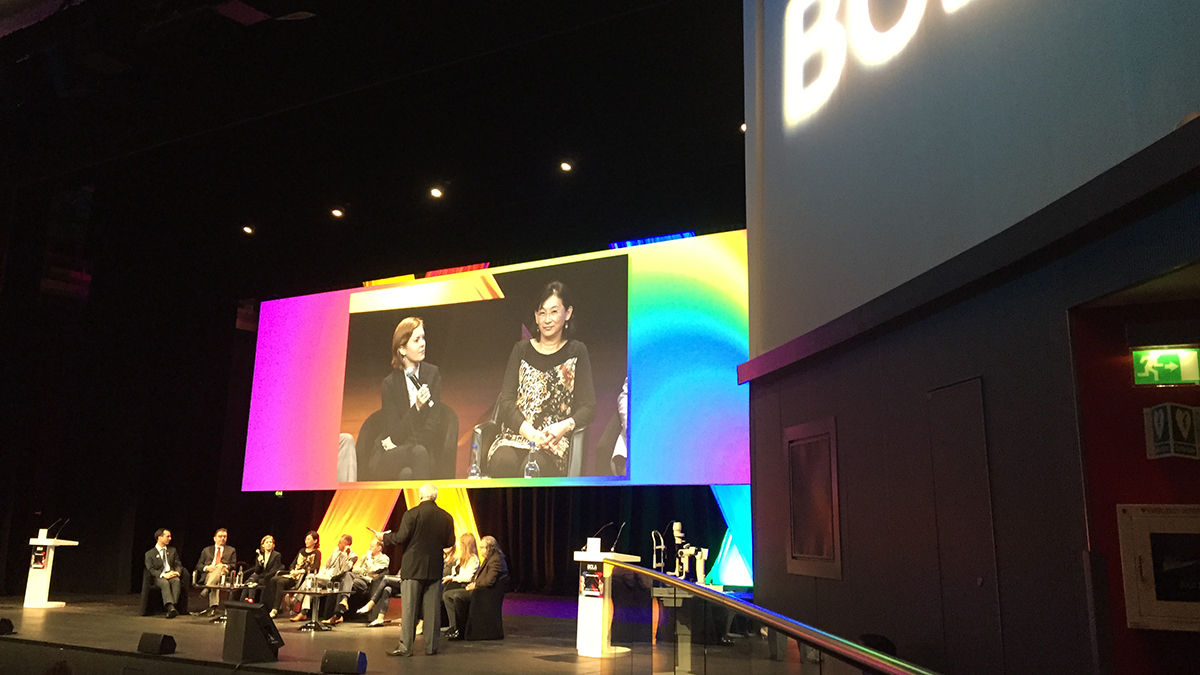Science
Myopia management 2015 BCLA symposium

In this article:
The day had finally dawned, Saturday 29th May 2015, all of my nerdy Christmases arriving at once! The brainchild of Nick Rumney, Cheryl Donnelly and James Wolffsohn of the British Contact Lens Association, the first day of the 2015 conference was dedicated to the science and clinical practice of myopia. Never mind that I was one week into a proper dose of flu, and not having had a proper flu before had never been so sick in my life, I’d travelled all the way from Brisbane, Australia to Liverpool to listen to the international heavyweights in myopia research and speak alongside them on the day’s program.
The day commenced with Mr Ian Flitcroft, whom I described later to the audience as being the author of “probably my most favourite myopia paper of all time”. The paper in question is a glorious 40 page tome entitled The complex interactions of retinal, optical and environmental factors in myopia aetiology. I have since found out that he is also an award winning novelist!
Using fascinating data presented in this paper to show that there is little evidence of ‘physiological’ myopia – such terminology would suggest that there is no additional risk of pathology with lower levels of myopia – Ian concluded that myopia is a bad for your eyes as smoking is for your heart!
Ian also drew a parallel to obesity, which affects around 25% of the industrial world and is seen as a public health problem. Myopia runs at much higher prevalence than 25% in most industrialised countries so no causal link is likely, but with incidence rates of 90% and beyond in East Asian countries, he is absolutely right to call myopia an “invisible epidemic”. Ian said that part of the invisibility is that we have corrected it so well – no disability is obvious with myopia as it is with obesity – but that 10D of myopia brings about a similar detriment to psychological, cosmetic, practical and financial quality of life as keratoconus.
Do you consider myopia as an optical inconvenience? We could believe that “optical problem plus lens equals no problem”, said Flitcroft, when in fact the emerging viewpoint is that myopia is an abnormality of eye growth affecting all ocular structures, and a significant public health issue. Myopia should be viewed not as a disease itself but as a risk factor for disease, which is modifiable just the same as obesity, smoking or hypertension is in heart disease.
Professor Brien Holden, CEO of the Brien Holden Vision Institute and co-founder of the world first International Myopia Institute described how myopic maculopathy is the leading cause of blindness in the working population in Japan and is approaching the same in China. Projections done by his research team show that 1.9 billion myopes in 2010 (28% of the world’s population) could increase to almost 5 billion myopes by 2050, with a population prevalence of over 50%.
After covering why myopia deserves special treatment in our practices, the case for how was made by Dr Nicola Logan (spectacle corrections), Dr Janis Orr (pharmaceutical treatments), Prof Brien Holden (multifocal contact lenses) and Prof Pauline Cho (orthokeratology). A live OrthoK fitting performed by Shelly Bansal on colleague Prof Christine Purslow demonstrated the fundamentals of fitting these specialty contact lenses, and great results were achieved at the on-stage follow up at 8am the next morning.
With only 10 minutes remaining in Shelly’s presentation, I was backstage and wired up, ready for my lecture entitled ‘Risk-benefit analysis – can we afford to do nothing?’ when my flu attacked. A vicious coughing fit had me commencing my lecture with half a voice which quickly turned into a wavery voice and more coughing. You can access my lecture PDFs via my personal website - I was so grateful for strong support from the audience who cheered when I said half way through my lecture that I was determined to keep going! Prof James Wolffsohn then presented the results of a global practitioner survey of myopia management.
The day concluded with a dozen-strong panel of experts, chaired by Brien Holden, discussing the present and future of myopia management. Optometry Times published a fantastic summary of this panel under the title Fast forward 10 years: How will we treat myopia?
Immediate Past BCLA President, Susan Bowers, said of the day: ”I thought that the speakers really were able to empower those practitioners attending to start fitting myopia control lenses by looking at the risks of myopia from an epidemiology base."
At the conclusion of the day, nerdy sensibilities entirely satisfied, I’m sure that our colleagues across the world who attended the day feel armed to actively manage myopia in clinical practice and to have a long term, future focussed view of myopia control.
Further Reading
Meet the Authors:
About Kate Gifford
Dr Kate Gifford is an internationally renowned clinician-scientist optometrist and peer educator, and a Visiting Research Fellow at Queensland University of Technology, Brisbane, Australia. She holds a PhD in contact lens optics in myopia, four professional fellowships, over 100 peer reviewed and professional publications, and has presented more than 200 conference lectures. Kate is the Chair of the Clinical Management Guidelines Committee of the International Myopia Institute. In 2016 Kate co-founded Myopia Profile with Dr Paul Gifford; the world-leading educational platform on childhood myopia management. After 13 years of clinical practice ownership, Kate now works full time on Myopia Profile.
Enormous thanks to our visionary sponsors
Myopia Profile’s growth into a world leading platform has been made possible through the support of our visionary sponsors, who share our mission to improve children’s vision care worldwide. Click on their logos to learn about how these companies are innovating and developing resources with us to support you in managing your patients with myopia.











